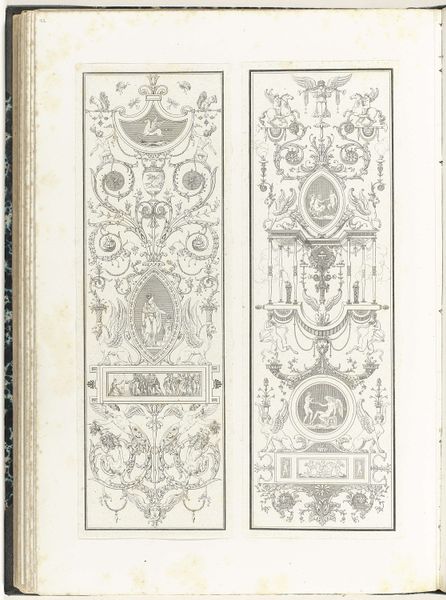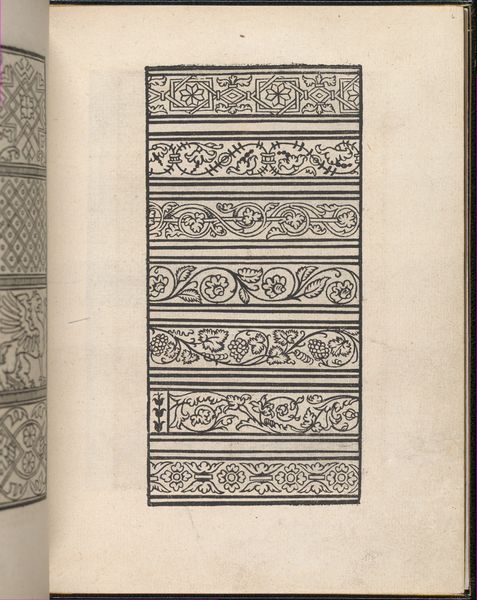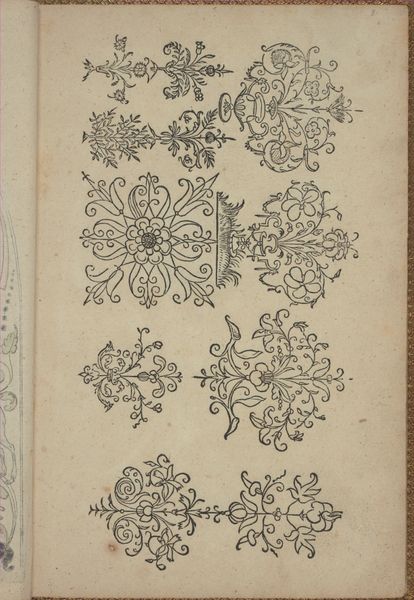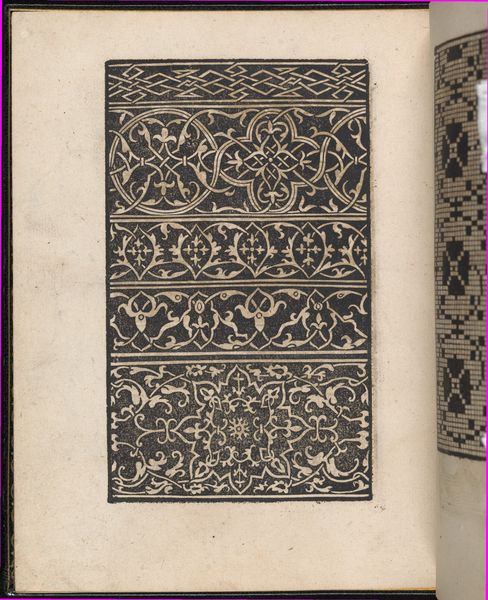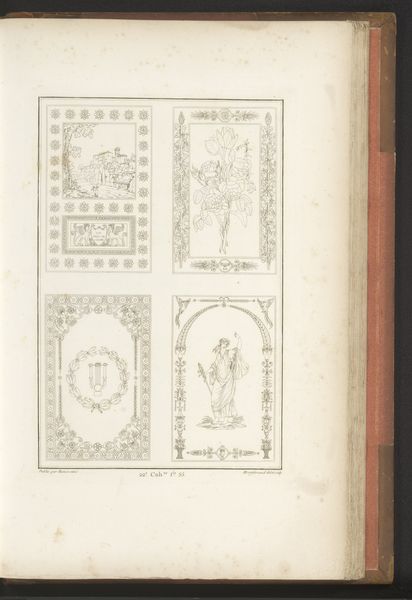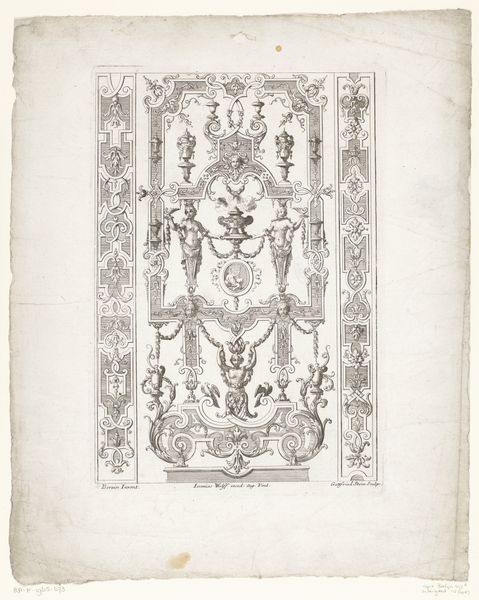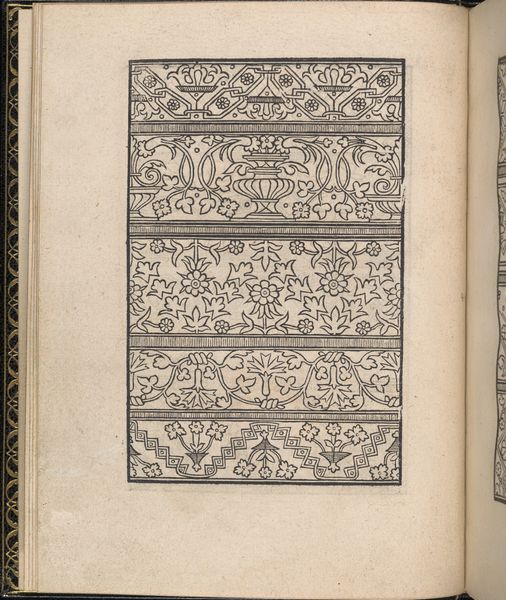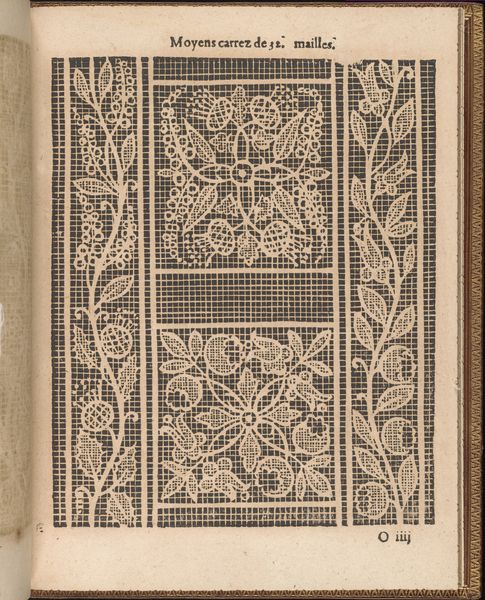
#
comic strip sketch
#
pen drawing
#
pen sketch
#
old engraving style
#
personal sketchbook
#
pen-ink sketch
#
pen work
#
sketchbook drawing
#
storyboard and sketchbook work
#
sketchbook art
Dimensions: height 418 mm, width 290 mm
Copyright: Rijks Museum: Open Domain
Curator: Looking at this open sketchbook page, titled "Twee panelen met moderne grotesken," likely from between 1866 and 1900 by C. Normand, the fine linework and symmetrical designs immediately catch my eye. Editor: My initial impression is of overwhelming intricacy. There’s something about the density of the detail that feels almost claustrophobic, even if it's a decorative work. Is that the intended purpose, or some attempt to show mastery of something? Curator: Well, as pen drawings within a sketchbook, these panels provide insights into the design processes prevalent during that period. It looks like careful planning, almost architectural in its precision. We can imagine the labor involved, crafting these repeating motifs… likely in service to some sort of client's aesthetic agenda. Editor: Absolutely. It does spark questions about whose labor is actually depicted—and, maybe more significantly, elided from this representation of ideal beauty. Who produced this image, under what social conditions, and what's that relationship with their own social position and political realities of their time? Are the people represented here truly reflective of that reality? Or just a fantasy. Curator: Interesting questions, given that grotesques themselves were often used to challenge classical ideals, almost satirizing them with exaggerated forms. Could Normand be playing with notions of taste, appealing to a specific, and perhaps wealthy, consumer base, while subtly critiquing it? Editor: That resonates, considering the social context of the late 19th century. Think of the rapidly shifting class structures. These could serve to uphold class divisions via beauty, whilst reflecting subtle power struggles between bourgeois ascendancy and remnants of the old aristocracy. Curator: And, from a material perspective, the choice of pen and ink is so economical, really highlighting the artist’s skill. Was this intended to be a template for artisans in other media, perhaps something mass-produced? Or are these drawings an artwork onto themselves? The answer matters. Editor: That question of replicability is key. Are we examining an artwork meant for wider social access or an exclusive product for select elite? It highlights, to me, the complex relationship between art and commerce and the need to interrogate how design perpetuates existing social order, and also reflects change and revolution. Curator: Indeed. This sketchbook page, therefore, gives access into the artistic dialogues around production and meaning in late 19th-century decorative arts. Editor: Yes, seeing it now through the layers of history and theory allows for such crucial reflection on society.
Comments
No comments
Be the first to comment and join the conversation on the ultimate creative platform.
